59th Carnival of Nuclear Energy Bloggers
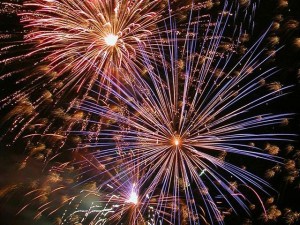 The 59th Carnival of Nuclear Energy Bloggers is up at Yes Vermont Yankee
The 59th Carnival of Nuclear Energy Bloggers is up at Yes Vermont Yankee
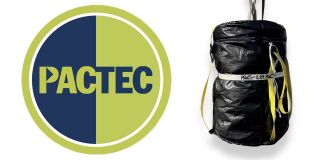
 The 59th Carnival of Nuclear Energy Bloggers is up at Yes Vermont Yankee
The 59th Carnival of Nuclear Energy Bloggers is up at Yes Vermont Yankee
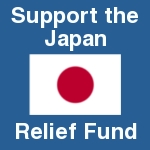 American Nuclear Society members and others, take a bow. Your contributions to the Japan Relief Fund have exceeded the $155,000 level. That's something to be proud of. There is still a need, however, for you to keep making donations to help our friends and colleagues, and their families, at the Fukushima Daiichi, Fukushima Daini, and Onagawa nuclear plants, all located on the damaged east coast of Japan.
American Nuclear Society members and others, take a bow. Your contributions to the Japan Relief Fund have exceeded the $155,000 level. That's something to be proud of. There is still a need, however, for you to keep making donations to help our friends and colleagues, and their families, at the Fukushima Daiichi, Fukushima Daini, and Onagawa nuclear plants, all located on the damaged east coast of Japan.
Two people with long experience working with the nuclear industry-one in Japan and one in the United States-share some "hall talk" with ANS Nuclear Cafe about Fukushima
In new media and old, time must be devoted to finding and conveying accurate information, no matter how short the news cycle.
Former NRC chairman is honored at American Nuclear Society national meeting
As President-Elect of the American Nuclear Society, I welcome my fellow ANS members and non-members to the 2011 June conference!
Travel Mugs Available at June ANS Meeting
The history of the development of peaceful uses of nuclear energy is accentuated by a number of significant emotional events. Some have been distinctly positive; the first man-made self-sustaining fission reaction, the first electricity generated by atomic energy, feats accomplished by the first nuclear powered naval vessels, the invention of life-saving nuclear medicine techniques, etc. During and following each of these milestones our collective understanding of the technology has continued to evolve and mature with increased knowledge and experience.
Some of us are old enough to remember when, in the 1970s, the US News and World Reports annual survey of careers with room for growth placed nuclear energy at or near the top of the list for several years in a row. I was in high school at the time, and had already decided that I was interested in energy production, nuclear in particular. The annual list publication reinforced my decision. My high school career lasted from 1973 to 1977, a period that coincided not only with the apogee of the first Nuclear Age, but that also was sandwiched between two significant oil-price-related recessions.
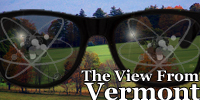 Vermont's Department of Public Service (DPS) is holding local meetings about a proposed Vermont Comprehensive Energy Plan, which is supposed to be on the governor's desk in October.
Vermont's Department of Public Service (DPS) is holding local meetings about a proposed Vermont Comprehensive Energy Plan, which is supposed to be on the governor's desk in October.
 Over the past year or so, there has been a lot of buzz about small modular reactors (SMRs). These are reactors whose electrical output ranges anywhere from ~25 MW to ~300 MW, as compared with over 1000 MW for large "conventional" nuclear power plants. With SMRs, the entire reactor (or possibly the entire nuclear island-NSSS) could be built in a factory and shipped to the site. Any site construction would be much more limited, and would only involve the (non-nuclear) balance of plant. Descriptions of some proposed SMRs can be found here, here and here.
Over the past year or so, there has been a lot of buzz about small modular reactors (SMRs). These are reactors whose electrical output ranges anywhere from ~25 MW to ~300 MW, as compared with over 1000 MW for large "conventional" nuclear power plants. With SMRs, the entire reactor (or possibly the entire nuclear island-NSSS) could be built in a factory and shipped to the site. Any site construction would be much more limited, and would only involve the (non-nuclear) balance of plant. Descriptions of some proposed SMRs can be found here, here and here.
Perhaps one of the more enduring cartoons that relates to the quality of information on the Internet is the one that states, "On the Internet no one knows you are a dog." It shows a drawing of two dogs sitting in front of a computer terminal. Unfortunately, the cartoon is copyrighted material so it can't be reposted here, but you can see it here along with many variations. The point of the cartoon is that words and images on the screen can come from anywhere and anyone.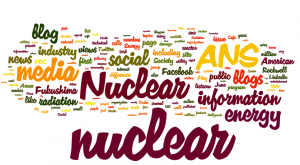 Clearing up misconceptions and outright falsehoods about nuclear energy since the March 11 Fukushima earthquake and tsunami is getting more attention these days. Problems range from not mainstream journalists not understanding the technical issues to people who are publicity crazed fear mongers out to get their face on a video.
Clearing up misconceptions and outright falsehoods about nuclear energy since the March 11 Fukushima earthquake and tsunami is getting more attention these days. Problems range from not mainstream journalists not understanding the technical issues to people who are publicity crazed fear mongers out to get their face on a video.
It's not the same as selling donuts, cars, or promoting sports entertainment
Become an ANS Facebook Friend
 Any time I'm having trouble getting actual work done, I like to barge in on other people and make it harder for them to work too. That's why I was over at Rerouted River National Laboratory the other day, hanging out in the office of somebody who insists that I refer to him as "Dr. N." This used to be his way of keeping me from jeopardizing his job by writing about what he actually says, but now he's also a big-time blogger, with scads of Twitter groupies who know him only as "Dr. N." So now, if I were to point out that his real name is Barlow Culbertson and he never got a doctorate, it probably wouldn't create a ripple in the blogosphere; he's much too cool as "Dr. N" for his first-life persona to matter to anyone.
Any time I'm having trouble getting actual work done, I like to barge in on other people and make it harder for them to work too. That's why I was over at Rerouted River National Laboratory the other day, hanging out in the office of somebody who insists that I refer to him as "Dr. N." This used to be his way of keeping me from jeopardizing his job by writing about what he actually says, but now he's also a big-time blogger, with scads of Twitter groupies who know him only as "Dr. N." So now, if I were to point out that his real name is Barlow Culbertson and he never got a doctorate, it probably wouldn't create a ripple in the blogosphere; he's much too cool as "Dr. N" for his first-life persona to matter to anyone.
The 56th Carnival of Nuclear Energy Bloggers is up at NEI Nuclear Notes
The use of food irradiation has expanded globally during the past decade and is gaining renewed momentum as a steadily increasing amount of irradiated food enters commercial channels in the United States and worldwide. Although irradiated fruits, vegetables, and poultry have been available commercially since the early 1990s, the introduction of irradiated ground beef by Huisken Meat Company in Minnesota during 2000 significantly increased awareness and interest in the technology.